Most of the world-famous and cherished reefs of Northeast Indonesia, from Raja Ampat, the Banda Sea, the Moluccas, and Sulawesi, are experiencing a mild bleaching event.
A very wet ‘La Nina’ year!
This year, ‘La Niña’ brought not only bad weather, with abnormal rains and a very intense wet season in all parts of Indonesia, but also high water temperatures. Visibility has been very low at many of the popular Indonesian dive sites. Fortunately, the combination of high temperature with cloudy skies and reduced light intensity has a lower impact on corals, but it still stresses them.
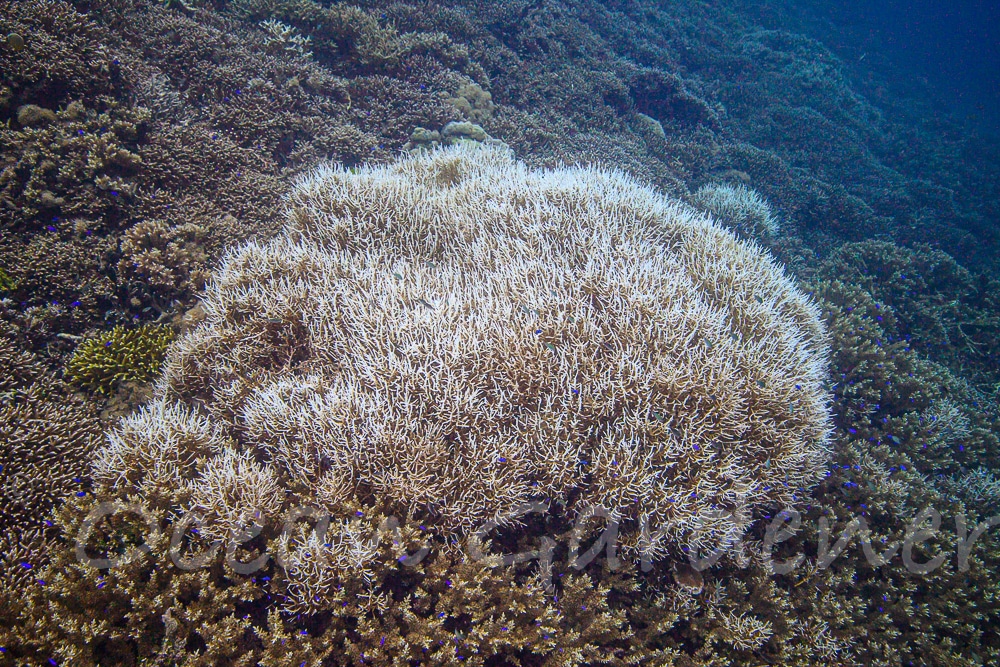
On the other hand, the very high amount of rain and the consequent runoff it generates are a source of pollution and additional stress for the corals.
Unusual Sea Surface Temperatures
The temperature has been unusually warm, with water temperatures in the 30°C range for a very long period. We don’t even remember the last time we had to use a wetsuit. Normally, in December-February, we expect a drop in temperature, but this year the drop has been minimal. The temperature should drop into the mid-twenties, but it barely went lower than 30°C. This unusually warm event, lasting for a long period with consistently high water temperatures, has taken a toll on the corals.
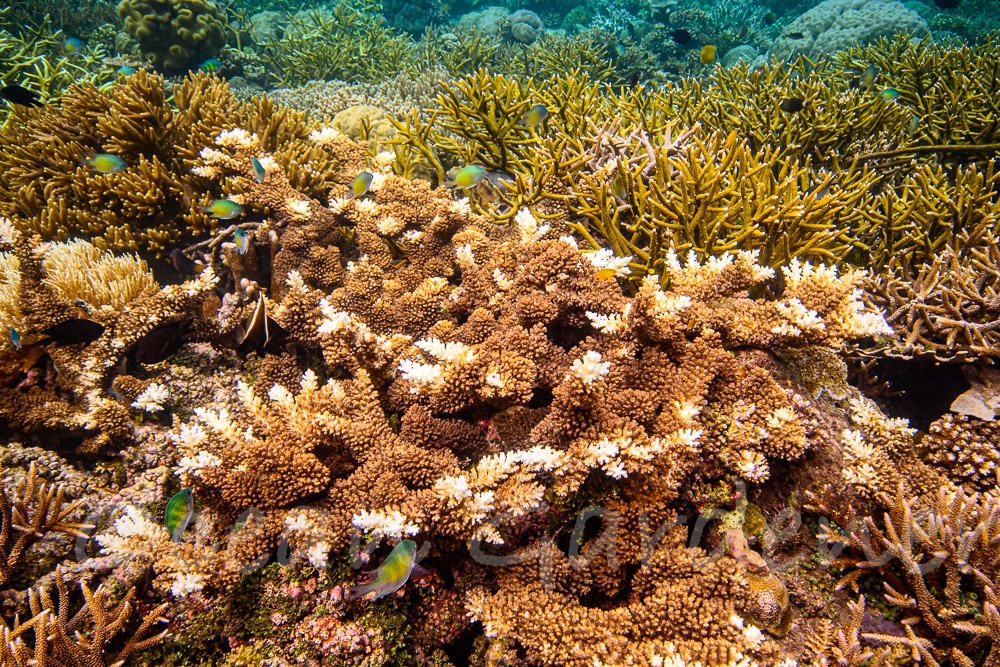
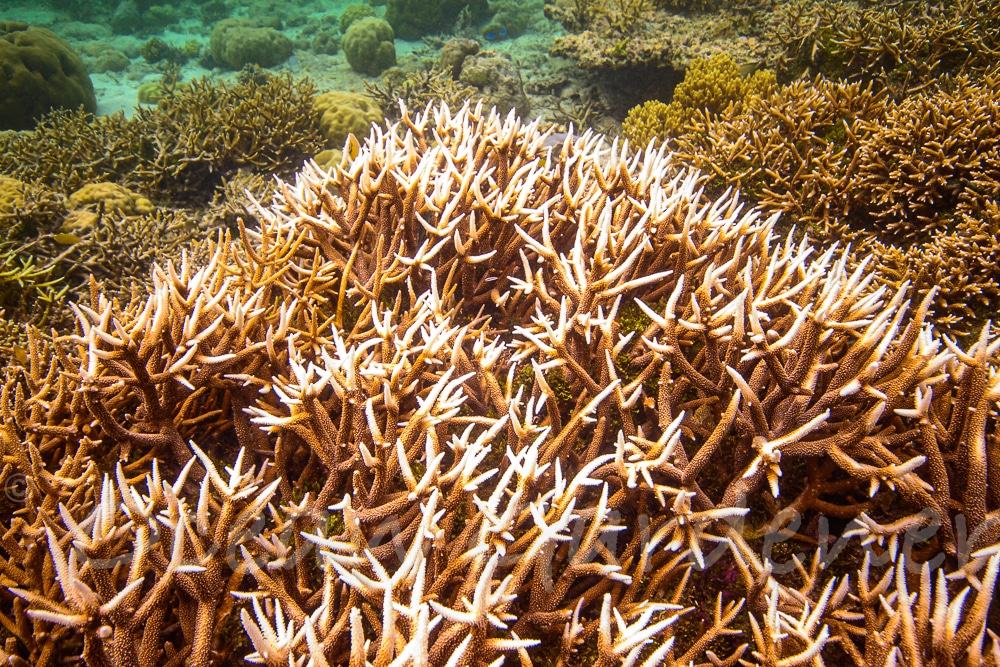
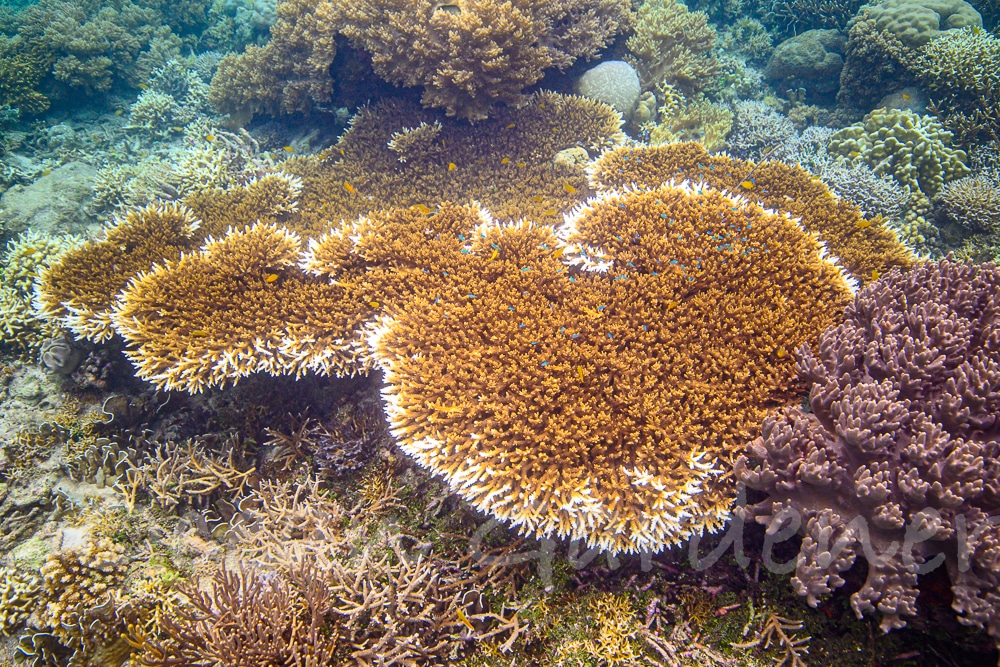
You can check Sea Surface Temperature (SST) in the coral triangle here.
A mild bleaching event
The bleaching event is not major, with only, in most parts, 10-15% of colonies showing stress signs. Most colonies are also partially bleached, with only branch tips losing symbionts and color, or some others just getting slightly brighter. This is not very obvious to the untrained eye, which is why we decided to write this post.
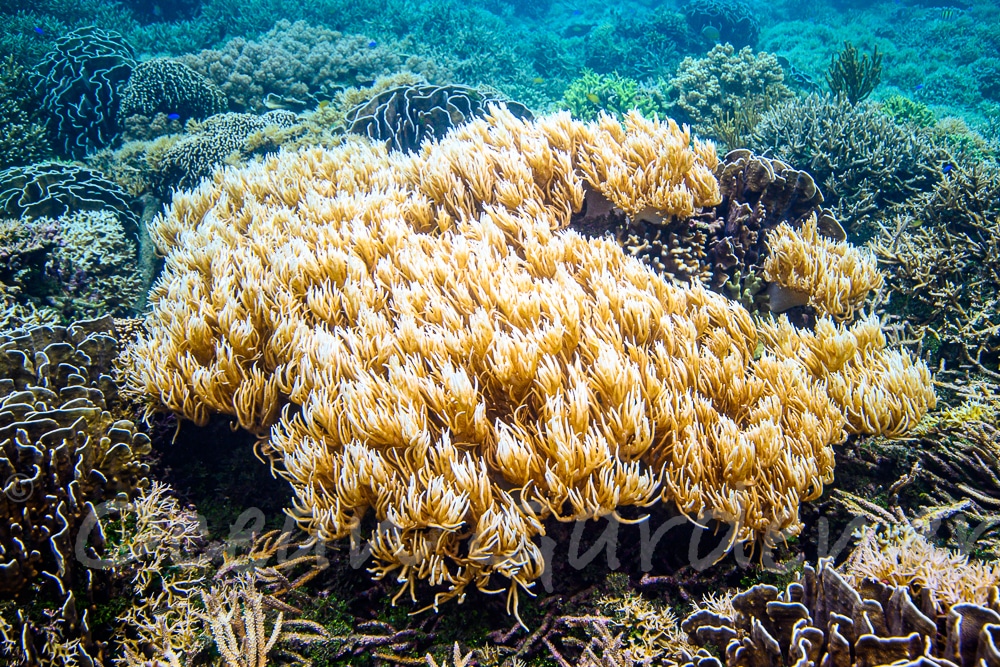
It usually takes a while for corals to show signs of bleaching, but we expect corals in the southern part of Indonesia to start showing signs of bleaching around March. Right now, they are still enduring it and holding on.
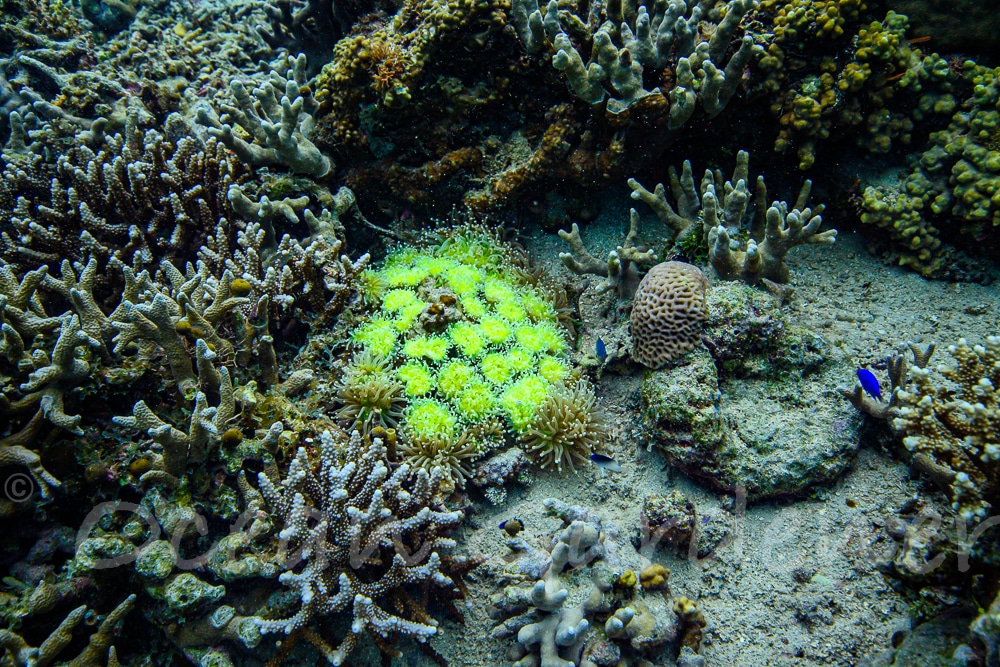
The good news?
The good news is that these mild events are actually good for coral adaptation, and scientists around the world are witnessing more and more reefs that have changed symbionts, now using zooxanthellae algae that are adapted to higher temperatures. So these small events are actually a sign of stress but also a sign of adaptation. We haven’t witnessed any significant mortality so far.
The bleaching process is actually an adaptive process. We are hoping that corals will have the time and energy to fully complete that process.
Monitoring these events and understanding the evolutionary mechanisms are very important. Being able to record such events and their intensity is a part of our training. We hope more students sign up for our “
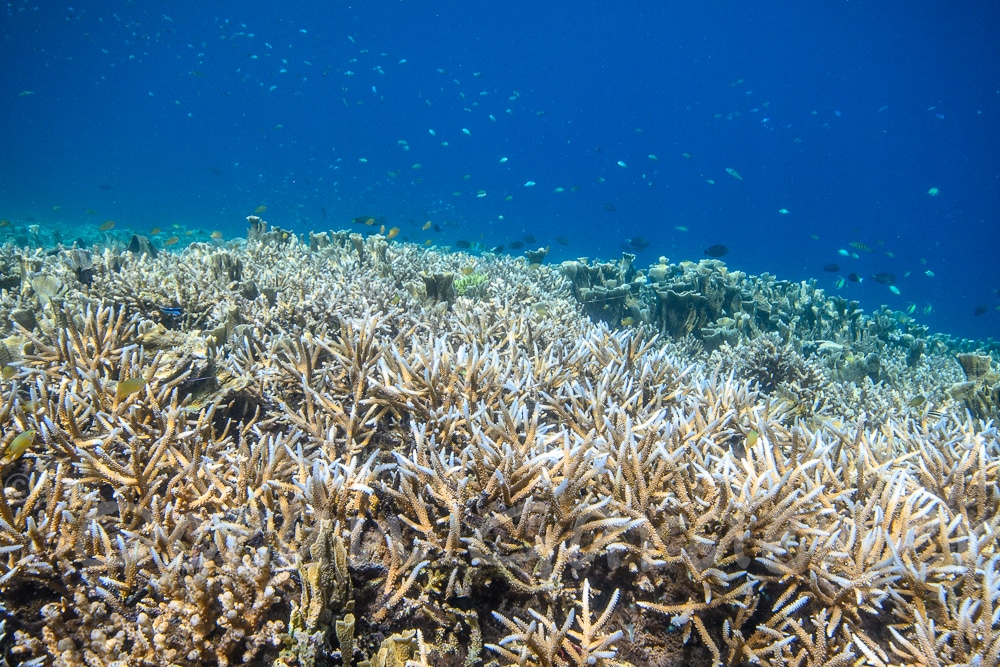
Monitoring these events and understanding the evolution mechanisms are very important. Being able to record such events, and their intensity is a part of our training. If you would like to learn more about corals and get hands-on with coral restoration, make sure to check out our list of coral restoration courses.